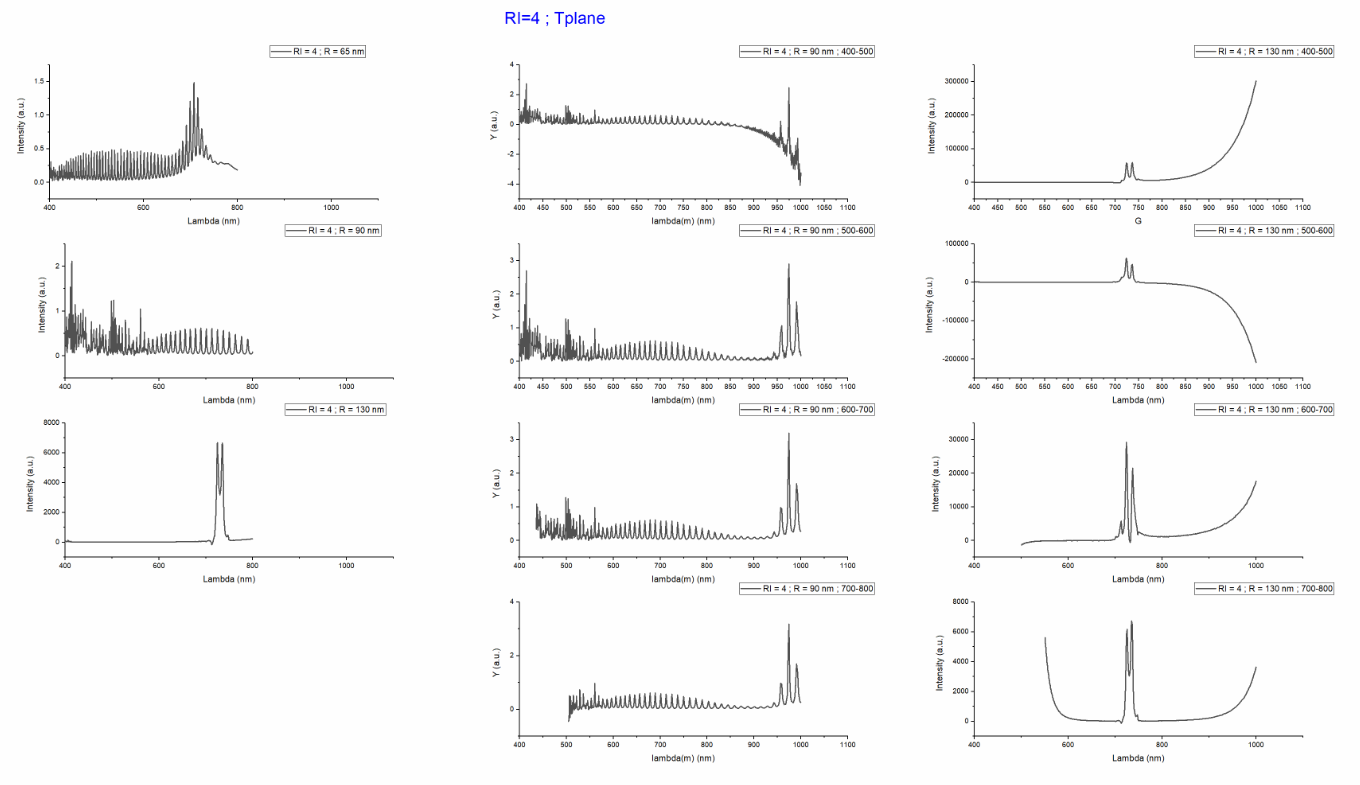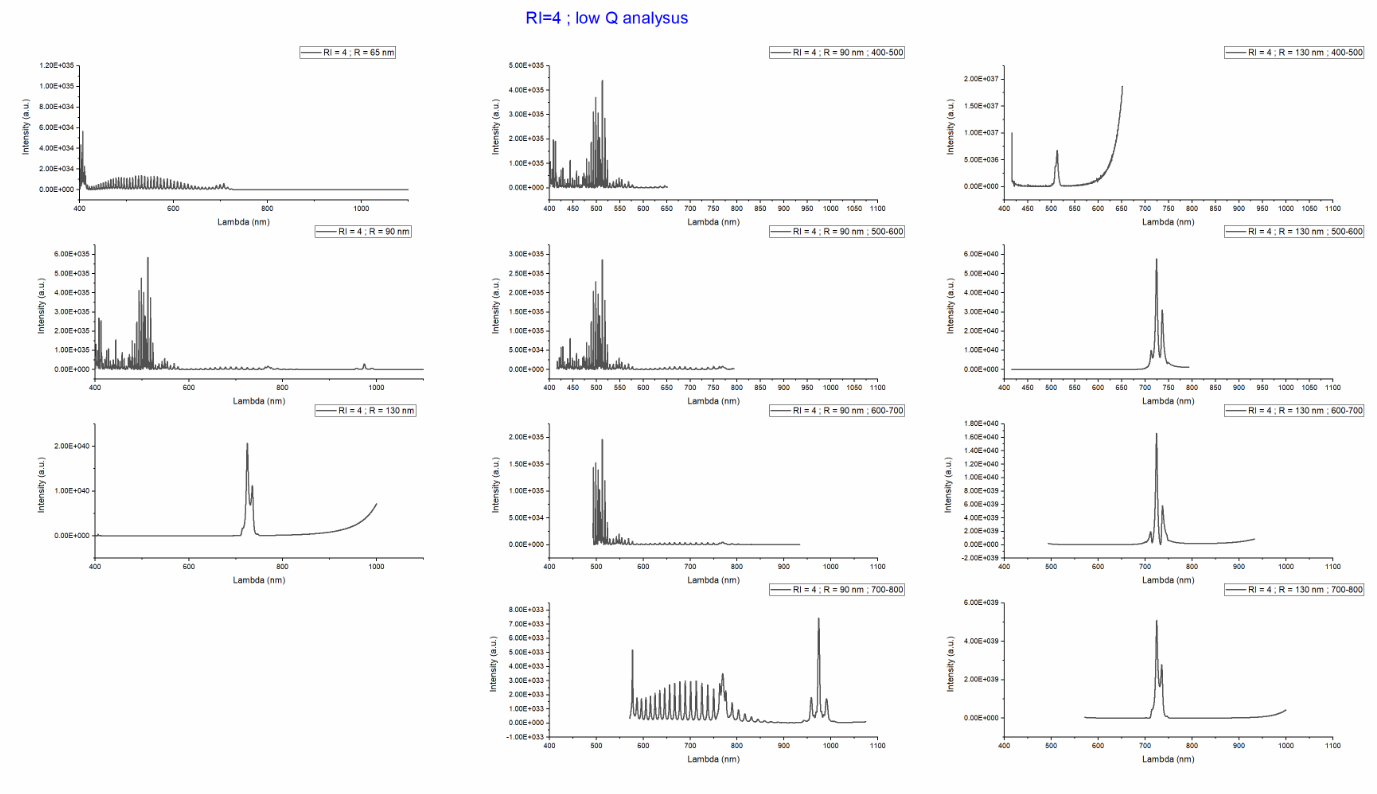-
-
July 30, 2023 at 7:36 am
hila.shalom1
SubscriberHello,
I am trying to simulate the lasing of a nanotube (RI=4) in Lumerical FDTD,I placed the plane source with a full range (400-800nm) or limited range (400-500 nm, 500-600 nm, 600-700 nm and 700-800 nm) at the begging of the tube. Then, put a DFTMonitor (Frequency-domain field and power) plane at the end of the nanotube. I also used lowQanalusis (analysis group) at the same place as the DFTMonitor,
I can understand the results, there are different results between the DFTMonitor and lowQanalusis analysis group
for DFTMonitor:
In a wide range: 400-800 nm wavelength, the spectra are full with peaks, and the number of peaks is reduced as the nanotube's radius is reduced (130 nm, 90 nm and 65 nm),
In a limited range (400-500 nm, 500-600 nm, 600-700 nm, and 700-800 nm):
For R= 65 nm, they are more peaks in the spectra compared to the full range, and the placed of the peaks are in the same places as the limited range increased,
For R= 130 nm, the same spectra compared to the full range and are the same as the limited range increased,
For lowQanalusis analysis group:
In a wide range: 400-800 nm wavelength, the number of peaks in the spectra are increased and then reduced as the nanotube's radius is reduced (130 nm, 90 nm and 65 nm),
In a limited range (400-500 nm, 500-600 nm, 600-700 nm and 700-800 nm):
For R= 65 nm, almost the same in a limited range (400-500 nm, 500-600 nm, 600-700 nm) but different for 700-800 nm limited range,
The are more peaks in the spectra compared to the full range, and the placed of the peaks are in the same places as the limited range increased,
For R= 130 nm, in the limited range (400-500 nm) only one peak and in a different place compared to the other limited range (500-600 nm, 600-700 nm, and 700-800 nm) that have two peaks.
-
July 31, 2023 at 9:36 pm
Guilin Sun
Ansys EmployeeThe source bandwidth you set is to make sure the wavelength speficied has suffiicent amplitude/power injected.
When you change the source wavelength, the mesh size will change. But I guess you did not change the PML layers. PML absorption depends on the thickness (and PML parameters). SO when mesh size changes please make sure the PML has not the same thickness or relative to the min wavelength.
When the transmission has postive and negative values, it means the simulation terminates with insuffiicent simulation time (did not reach the autoshutoff min, or the autoshutoff min is too large).
I would suggest to use one wavelength range (it seems you use fixed refractive index of 4. it makes things relatively easier), make sure the simulatio time is enough, the autoshutoff min is small enough. You can use a time monitor to check the time signal near the end of the simulation and see if it is small (however the log file gives the averaged result but the time monitor is local); the transmission curve is smooth without non-lasing ripples. Then with proper setting ajustments do other simulation.
BTW: what is the purpose to simulate different bandwidth?
-
September 3, 2023 at 8:10 am
hila.shalom1
Subscriber
-
- The topic ‘Lumerical FDTD’ is closed to new replies.



-
4678
-
1565
-
1386
-
1241
-
1021

© 2025 Copyright ANSYS, Inc. All rights reserved.









